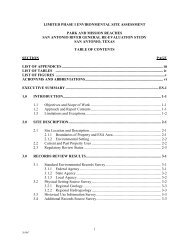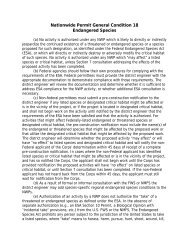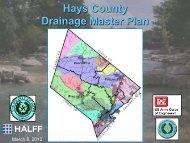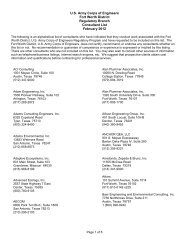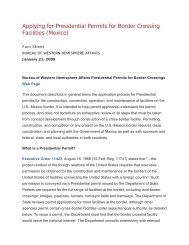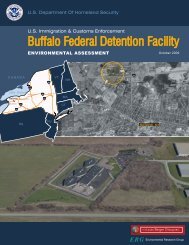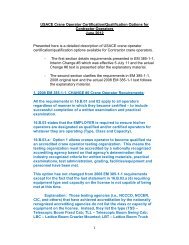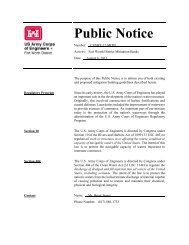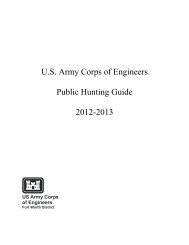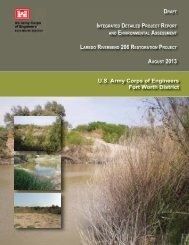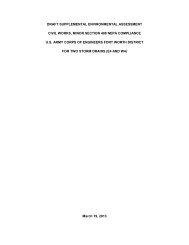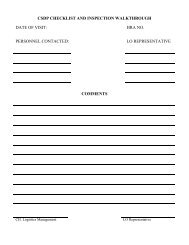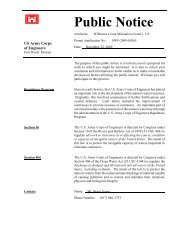environmental assessment us border patrol, tucson sector
environmental assessment us border patrol, tucson sector
environmental assessment us border patrol, tucson sector
You also want an ePaper? Increase the reach of your titles
YUMPU automatically turns print PDFs into web optimized ePapers that Google loves.
3-39123456789101112131415161718192021222324252627282930313233343536Table 3-6. Total Air Emissions (tons/year) from Propane Generatorsvers<strong>us</strong> the de minimis LevelsPollutantTotal(tons/year)de minimis Thresholds(tons/year) 1CO 0.27 100VOC 0.02 100NOx 0.08 100PM-10 0.00 100PM-2.5 0.00 100SO 2 0.00 100Source: 40 CFR 51.853 and GSRC model projections (Appendix C)1 Cochise County is in attainment for all NAAQS (USEPA 2010b)3.9.2.3 Alternative 2The Alternative 2 site is also located in the Cochise County airshed. The impacts on air qualitywould be similar to those described for the Preferred Alternative.3.9.2.4 Alternative 3The Alternative 3 site is also located in the Cochise County airshed. The impacts on air qualitywould be similar to those described for the Preferred Alternative.3.9.2.5 Alternative 4The Alternative 4 site is also located in the Cochise County airshed. There would be minimalnew construction and ground disturbance associated with alternative, and modifications andmaintenance at the site may require the temporary <strong>us</strong>e of construction equipment, trucks, orgenerators, which may result in temporary, minor increases in air emissions. Even so, theimpacts on air quality from Alternative 4 would be negligible.3.10 NOISE3.10.1 Affected EnvironmentNoise is generally described as unwanted sound, which can be based either on objective effects(i.e., hearing loss, damage to structures, etc.) or subjective judgments (e.g., communityannoyance). Sound is <strong>us</strong>ually represented on a logarithmic scale with a unit called the decibel(dB). Sound on the decibel scale is referred to as sound level. The threshold of human hearingis approximately 3 dB, and the threshold of discomfort or pain is around 120 dB.Noise levels occurring at night generally produce a greater annoyance than do the same levelsoccurring during the day. It is generally agreed that people perceive intr<strong>us</strong>ive noise at night asbeing 10 dBA (A-weighted decibel is a measure of noise at a given, maximum level or constantstate level) louder than the same level of intr<strong>us</strong>ive noise during the day, at least in terms of itspotential for ca<strong>us</strong>ing community annoyance. This perception is largely beca<strong>us</strong>e background<strong>environmental</strong> sound levels at night in most areas are also about 10 dBA lower than those duringthe day.Douglas FOB EADraftAug<strong>us</strong>t 2011



